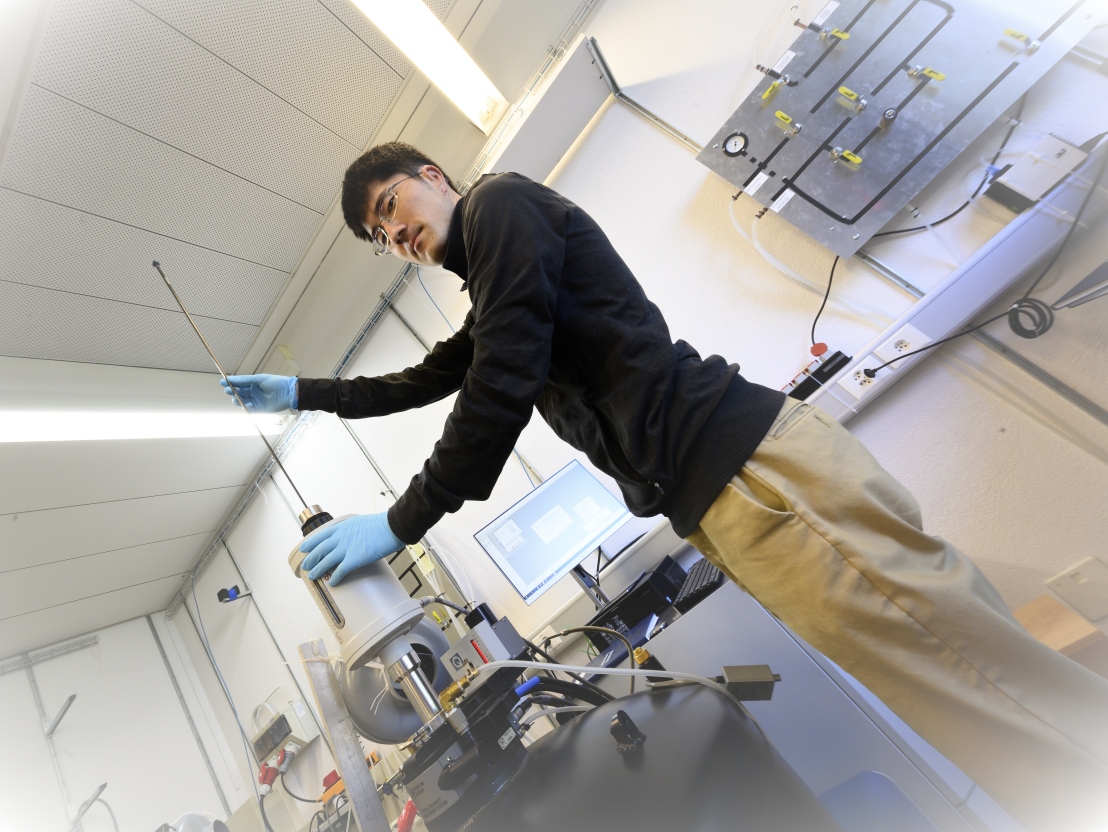Research Topics

Some (arguably, material scientists) study the physics of new materials. We, as physicists, are more interested in new physics of materials. We hardly ever start with a material. We start with an interesting theoretical concept (e.g. deconfinement), model (e.g., J1-J2 Heisenberg model on a square lattice) or phenomenon (e.g., Bose-Einstein condensation).
We then look for materials where these can be studied experimentally. For the examples above it would be, correspondingly, the spin ladder compound (C7H10N)2CuBr4, where applying an external magnetic field causes a quantum phase transition at which fractional excitations called spinons become deconfined [1]; the vanadyl phosphate BaCdVO(PO4)2, which from the magnetic point of view is not a bad approximation to that model and becomes a spin-nematic in applied fields [2], or the spin-tube compound Sul-Cu2Cl4, where a magnetic field induces a Bose-Einstein condensation of magnons which can be probed with insane accuracy through dielectric measurements [3]. For us, materials are no more than a means to the end of studying the underlying fundamental physics. But they are also a validation of that this physics is real and not just a form of mathematics.
We are primarily interested in complex collective quantum behavior (quantum phases and excitations) that emerges in simple systems with simple degrees of freedom and simple interactions. This is the main reason why our focus is on magnetic insulators. These materials may be chemically complex, but the degrees of freedom are well defined: the spins of their magnetic ions, often just one or two per crystallographic unit cell. Magnetic interactions are also simple: Heisenberg or Ising coupling of typically only the nearest-neighbor spins. The corresponding magnetic models are so simple, that can often be described with just a few parameters. The latter can often be accurately determined experimentally, leaving no more unknowns in the problem. And yet, these simple models and the quantum magnets that realise them demonstrate the most amazing collective behavior: quantum liquids, excitations with fractional quantum numbers, Majorana Fermions, a zoo of the most bizarre symmetry-broken phases, states with non-trivial topology, quantum phase transitions of every stripe, etc.
There is another reason why quantum magnets for our purposes are: observables. We have experimental techniques that couple to the relevant degrees of freedom directly. This giving us experimental access to correlation and response functions that are key to understanding emergent collective behavior. The most important of these techniques is neutron scattering, which can probe spin correlations not only in time (frequency) but also in space (momentum), and do so on a level allowing a direct quantitative comparison with theory. Here are some examples of research topics that we focused on in the past 5-7 years:
[1] D. Schmidiger, P. Bouillot, T. Guidi, R. Bewley, C. Kollath, T. Giamarchi, A. Zheludev, Spectrum of a magnetized strong-leg quantum spin ladder, external pagePhys. Rev. Lett. 111, 107202 (2013)call_made.
[2] V. K. Bhartiya, K. Yu. Povarov, D. Blosser, S. Bettler, Z. Yan, S. Gvasaliya, S. Raymond, E. Ressouche, K. Beauvvois, J. Xu, F.Yokaichiya, and A. Zheludev, Presaturation phase with no dipolar order in a quantum ferro-antiferromagnet, external pagePhys. Rev. Research 1, 033078 (2019)call_made.
[3] K. Yu. Povarov, A. Reichert, E. Wulf and A. Zheludev, Giant dielectric nonlinearities at a magnetic Bose-Einstein condensation, external pagePhys. Rev. B 92, 140410(R) (2015)call_made.
